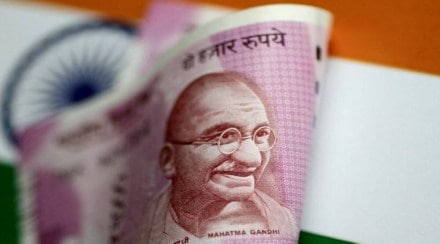The unhelpful base notwithstanding, headline growth numbers for the gross domestic product (GDP) at 5.4% year-on-year (y-o-y) and gross value-added (GVA) at 4.7% for the December 2021 quarter are a huge disappointment because the economy was expected to gather momentum. A growth at over 6%, which several economists had pencilled in, was always optimistic, but a sub-5.5% print was unexpected. At Rs 38.22 lakh crore—the output in the third quarter—the GDP is smaller than the Rs 38.96 lakh crore reported in Q4FY21. The biggest area of concern is manufacturing, which has remained stagnant in the quarter, despite Q3 being the festive and wedding season. To be sure, the Omicron wave did disrupt businesses and the shortage of key inputs, especially in the automobile sector, would have hit production. Moreover, capacity utilisation levels remain relatively low, at close to 70%. Nonetheless, it is disconcerting that manufacturing has been so subdued for two consecutive quarters.
In Q2FY22, it was the smart 4.5% y-o-y growth of the farm sector that had pulled the GDP up. This time around, at 2.6% y-o-y, the performance of agriculture is worrying, even accounting for an adverse base. Although we have seen a bumper foodgrains harvest of 316 million tonnes, the terms of trade have been adverse due to inflation in inputs. The data on rural wages reveals small increases suggesting rural consumption could remain subdued.
The big shocker has been construction which actually contracted during the quarter, while heavy rains in some parts of the country would indeed have hampered activity. A contraction during winter suggests not too many projects, including those in the real estate space, are taking off.
Much like in the previous quarters of the current fiscal, private consumption which accounts for more than half the economy, has been sluggish. Although, in absolute terms, the private final consumption expenditure (PFCE) of Rs 23.21 lakh crore is higher than in previous quarters, at 7% y-o-y, the growth is very poor considering it comes off an anaemic base of just 0.6% y-o-y in Q3FY21. One had expected consumption would rebound in the festive season, but it appears the pent-up demand may have been satiated, resulting in little additional spending.
The other big disappointment is the capital formation where the increase is an anaemic 2% y-o-y. On the back of a negative 0.6% growth y-o-y in Q3FY21, it clearly indicates companies are in no hurry to make investments. The services sector—trade, hotels and transport—has done well to grow at 6% y-o-y even if it has come off a contraction of 10.1% y-o-y. Should this sustain, it augurs well for employment. While the jump in public administration has been a big 16% y-o-y, it appears this was driven by personal services, a segment where the data is prone to revisions.
With the data for Q1 and Q2 revised downwards, albeit marginally, it is now a sub-9% growth for FY22. Indeed, the implied growth rate of 4.8% y-o-y for Q4 looks a bit of a stretch since the Omicron wave did hit business activity and consumption, specially in contact-intensive services, in January. Add to that the rising risks from higher crude oil and commodities prices after Russia’s invasion of Ukraine. Moreover, inflation is bound to hurt consumption given companies have been passing on at least some part of the additional raw material costs to consumers. A realistic forecast for the year, therefore, would be 8.5% rather than 8.9%. Unfortunately, much of this would be driven by the organised sector; a proxy for GVA showed India Inc posted a growth of 13% y-o-y in Q3FY22 while the economy has reported a GVA growth of 4.7% y-o-y. India’s informal sector continues to languish.
